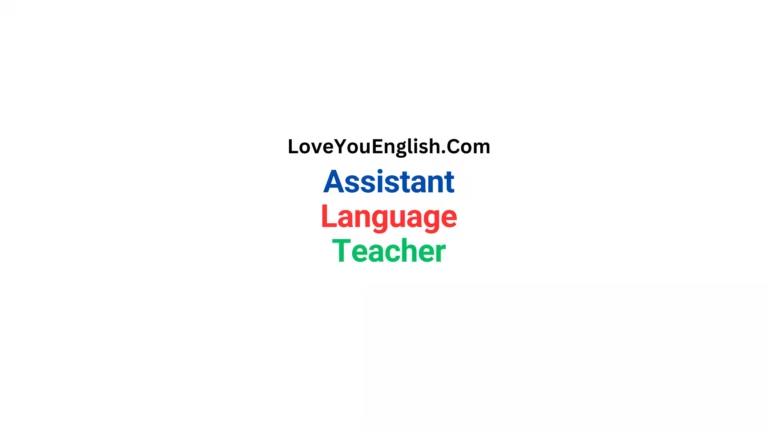Listening Activities for ELT Classrooms
“Have you ever noticed how students perk up when they hear something interesting?”
This simple observation is the key to making listening activities in English Language Teaching (ELT) classrooms both fun and effective.
Listening is one of the most important skills for language learners, but it can also feel boring or overwhelming if not done right.
The good news?
With the right activities, you can turn listening into an exciting part of your lessons that keeps students engaged and helps them improve their English naturally.
In this post, we’ll explore a variety of simple, creative, and practical listening activities that you can use in your ELT classroom to make learning enjoyable for your students.
Why Listening Matters in ELT
Before diving into the activities, let’s talk about why listening is so important.
For English learners, listening is how they pick up new words, understand grammar in action, and get used to how native speakers sound.
It’s not just about hearing words—it’s about understanding meaning, tone, and context. But sitting quietly while a recording plays isn’t enough.
Students need activities that make them active listeners, not passive ones.
When students are engaged, they’re more likely to remember what they hear and feel confident using English outside the classroom.
The activities below are designed for different levels—beginner, intermediate, and advanced—so you can adapt them to your students’ needs.
They’re easy to set up, use simple materials, and focus on keeping students interested. Let’s get started!
1. “Guess the Sound” – A Fun Warm-Up
One of the easiest ways to kick off a listening lesson is with a game called “Guess the Sound.” This works well for all levels, especially beginners, and it gets students excited right away.
How it works: Play short audio clips of everyday sounds—like a dog barking, rain falling, a car honking, or someone clapping. You can find these clips online or record them yourself. Ask students to listen carefully and guess what they hear. For beginners, give them a list of possible answers to choose from. For intermediate or advanced students, let them write or say their guesses without any hints.
Why it’s engaging: Students love the challenge of figuring out the mystery, and it wakes up their ears for more listening tasks. To make it even more fun, turn it into a team competition with points for correct guesses.
Tip: Tie the sounds to a theme you’re teaching, like “weather” or “animals,” to connect it to their vocabulary lessons.
2. “Fill in the Blanks” – Songs and Lyrics
Music is a fantastic way to make listening enjoyable, especially for teenagers and young learners. The “Fill in the Blanks” activity uses songs to practice listening for specific words.
How it works: Choose a popular English song that matches your students’ level—something slow and clear for beginners, like “Twinkle, Twinkle, Little Star,” or faster and trickier for advanced learners, like a pop song by Taylor Swift. Print out the lyrics but leave out some key words. Play the song once or twice, and ask students to fill in the missing words as they listen.
Why it’s engaging: Students already love music, so they’ll enjoy hearing familiar tunes while practicing English. Plus, singing along after the activity boosts their confidence and pronunciation.
Tip: Let students vote on the song beforehand to keep them invested. You can also discuss the song’s meaning afterward to build speaking skills.
3. “Story Detective” – Listening for Clues
This activity turns students into detectives, listening carefully to solve a mystery or follow a story. It’s great for intermediate and advanced learners who can handle longer listening tasks.
How it works: Find or write a short story with a simple plot—like a missing cat or a surprise party. Record yourself reading it, or use an audio clip from a podcast or audiobook. Before playing it, give students a worksheet with questions like “Who lost the cat?” or “Where did they find it?” Play the recording once or twice, and let students answer as they listen.
Why it’s engaging: The detective twist makes it feel like a game, not a test. Students stay focused because they want to solve the puzzle.
Tip: Add a drawing task afterward—ask students to sketch what they think happened in the story. This adds a creative layer and keeps the energy high.
4. “Listen and Act” – Total Physical Response (TPR)
Total Physical Response (TPR) is a method where students listen to instructions and respond with actions. It’s perfect for beginners and young learners who need to move around.
How it works: Give simple commands like “Stand up,” “Touch your nose,” or “Jump three times.” Start with easy instructions and gradually make them longer, like “Walk to the door and clap your hands.” You can also tell a mini-story: “You’re in a forest. Pick up a stick. Now run from the bear!” Students listen and act it out.
Why it’s engaging: Moving around keeps students awake and happy. It also links words to actions, which helps them remember better.
Tip: Pair students up and let them take turns giving commands to each other once they get the hang of it.
5. “What Happens Next?” – Predicting with Audio Clips
This activity builds listening and critical thinking skills by asking students to predict what happens in a story or conversation. It works for all levels, depending on the clip you choose.
How it works: Find a short audio clip—like a scene from a movie, a podcast, or even a dialogue you record. Play the first part, then pause it at an exciting moment. Ask students, “What happens next?” Beginners can choose from options you give them (e.g., “She opens the door” or “She runs away”), while advanced students can write or say their own ideas. Play the rest to see if they were right.
Why it’s engaging: The suspense keeps students curious, and they feel proud when their guesses match the ending.
Tip: Use clips with clear voices and simple language for lower levels, and save complex ones for advanced classes.
6. “Telephone Game” – Listening and Repeating
The classic “Telephone Game” is a playful way to practice careful listening and speaking. It’s great for all ages and levels.
How it works: Whisper a short sentence to one student, like “The cat is on the mat.” They whisper it to the next student, and it goes around the group. The last student says it out loud, and you compare it to the original. For advanced learners, use longer sentences or even a whole story.
Why it’s engaging: The funny mistakes that happen along the way make everyone laugh, and it shows how important it is to listen closely.
Tip: Do it in small groups so everyone gets a turn, and try themed sentences tied to your lesson, like food or travel.
7. “Real-Life Listening” – Using Authentic Materials
For intermediate and advanced students, bring the real world into the classroom with authentic audio like news clips, movie trailers, or phone conversations.
How it works: Pick a short, clear clip—maybe a weather report or a restaurant order. Give students a task, like listing three things they hear (e.g., “It’s sunny,” “Bring water,” “Hurry up”). Play it a couple of times, then discuss what they understood.
Why it’s engaging: It feels grown-up and useful, like they’re practicing for real life—not just a textbook.
Tip: Start with slow, scripted audio and build up to natural-speed clips as students improve.
Bringing It All Together
Listening doesn’t have to be a chore for your ELT students.
With activities like “Guess the Sound,” “Fill in the Blanks,” or “Story Detective,” you can turn it into something they look forward to.
The key is to keep them active—whether they’re guessing, moving, or predicting—so they’re not just hearing but really listening.
Mix up the activities to suit your students’ levels and interests, and watch their skills grow.
These ideas are simple to try, but they make a big difference.
Students will leave your classroom feeling more confident in their English, and you’ll enjoy teaching them.
So next time you plan a lesson, ask yourself: “How can I make listening fun today?” Your students—and their ears—will thank you.
Here are some FAQs (Frequently Asked Questions) about using listening activities in English Language Teaching (ELT) classrooms, designed to help teachers, students, or anyone interested in making listening lessons effective and fun:
FAQs
1. Why are listening activities important in ELT?
Listening activities help students understand spoken English, including pronunciation, vocabulary, grammar, and tone. They prepare students for real-life conversations and build confidence in using English outside the classroom.
2. What makes a good listening activity?
A good listening activity is:
- Engaging (keeps students interested, like a game or story).
- Level-appropriate (not too easy or too hard).
- Active (students do something, like guessing or answering questions).
- Connected to the lesson (e.g., uses vocabulary or themes they’re learning).
3. How do I choose the right audio for my students?
- Beginners: Use slow, clear audio with simple words (e.g., songs, short dialogues).
- Intermediate: Try podcasts, movie clips, or stories with some challenges.
- Advanced: Use authentic materials like news reports or fast conversations.
- Always preview the audio to check for clarity and relevance.
4. What if my students find listening activities boring?
To keep them engaged:
- Use fun formats like games (“Guess the Sound”) or music (“Fill in the Blanks”).
- Add movement, like in Total Physical Response (TPR) activities.
- Let students choose topics or songs they like.
- Keep activities short and varied.
5. Can listening activities work for all age groups?
Yes! Adjust the activity to the age:
- Young learners: Use songs, sound games, or storytelling with actions.
- Teens: Try pop songs, movie clips, or mysteries.
- Adults: Use real-world audio like job interviews, podcasts, or news.
6. Do I need special equipment for listening activities?
Not really! You need:
- A device to play audio (phone, computer, or speaker).
- Good-quality audio clips (clear, not too noisy).
- Optional: Worksheets or props for activities like “Story Detective.” You can find free audio online or record your own voice.
7. How can I help students who struggle with listening?
- Start with short, simple clips and build up slowly.
- Play the audio more than once.
- Give clues, like a word list or questions, before listening.
- Pair weaker students with stronger ones for support.
- Encourage them to focus on the main idea, not every word.
8. How do I know if my students are improving their listening skills?
- Answering questions correctly after listening.
- Joining in discussions about the audio.
- Using new words or phrases they heard.
- Feeling more confident in listening tasks over time.
9. Where can I find audio for ELT listening activities?
- Free resources: Websites like BBC Learning English, ESL Lab, or Project Gutenberg (for audiobooks).
- Songs: YouTube, Spotify, or kid-friendly music sites.
- Podcasts: Look for ELT podcasts or short story podcasts.
- Your own voice: Record simple dialogues or stories tailored to your students.
10. Can listening activities help with other skills?
Absolutely! They can improve:
- Speaking: Students mimic pronunciation or discuss what they heard.
- Vocabulary: They learn new words in context.
- Grammar: They hear correct sentence structures.
- Writing: Activities like “Fill in the Blanks” connect listening to writing.
11. How often should I include listening activities in my lessons?
Aim for at least one listening activity per lesson or a few times a week. Mix short warm-ups (like “Guess the Sound”) with longer tasks (like “Story Detective”) to keep it balanced.
12. What if I don’t have internet or technology in my classroom?
No problem! You can:
More topics:
- Remote Education Jobs Opportunities
- The Role of Technology in English Teaching
- Managing Discipline in Online ESL Lessons
- The Rise of Online English Teaching
- The Ultimate Guide To Online English Teaching
- Online Education: The Modern Way to Learn







